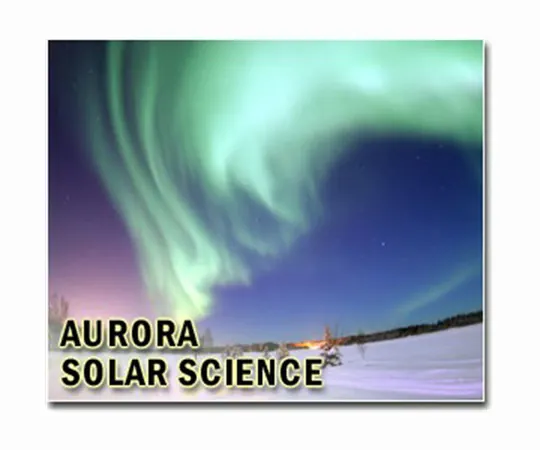
UNH Revolutionizes Aurora Research with AI-Driven Image Categorization
2025-01-10
Author: Sophie
Introduction
Researchers at the University of New Hampshire (UNH) have made a groundbreaking advancement in the study of the aurora borealis, a breathtaking natural phenomenon often referred to as the northern lights. While these stunning displays of color in the night sky captivate many, they can also pose serious risks to electronics and communications on Earth, particularly as a result of solar activity.
Pioneering Study
A pioneering study published in the Journal of Geophysical Research has unveiled a novel approach using artificial intelligence to categorize and label an extensive database of aurora images. This significant initiative aims to deepen our scientific understanding of auroras and enhance our ability to forecast geomagnetic storms that can disrupt crucial infrastructure.
Processing Aurora Images
The research team processed an astonishing 706 million auroral images obtained from NASA's Time History of Events and Macroscale Interactions during Substorms (THEMIS) mission. This mission employs twin spacecraft that capture images of the sky every three seconds from a network of 23 stations across North America, offering unparalleled insights into auroral activity.
Importance of the Dataset
Jeremiah Johnson, the lead author of the study and an associate professor of applied engineering and sciences, highlighted the importance of this extensive dataset. "Understanding how the solar wind interacts with Earth’s magnetosphere is crucial for safeguarding our technology. However, the sheer volume of data has historically limited its effective utilization," he stated.
Innovative Algorithm
To tackle this challenge, the team developed an innovative algorithm designed to efficiently sort the THEMIS all-sky images collected between 2008 and 2022. The algorithm classifies images into six distinct categories: arc, diffuse, discrete, cloudy, moon, and clear/no aurora. This systematic approach not only streamlines data analysis but also paves the way for more in-depth exploration of auroral dynamics.
Implications of the Research
The implications of this research extend beyond mere categorization; it equips scientists with the tools needed to investigate the intricate relationships between auroras and solar activity more effectively. This study not only organizes a previously overwhelming dataset but also enhances our understanding of these cosmic wonders.
Future Prospects
As interest in space weather grows, this innovative approach promises to be a transformative step in how researchers analyze and interpret auroral phenomena, potentially leading to breakthroughs that could improve predictive models for geomagnetic storms and their impacts on terrestrial systems.
Conclusion
Stay tuned for more updates on this exciting research and its implications for our interaction with the cosmos!



 Brasil (PT)
Brasil (PT)
 Canada (EN)
Canada (EN)
 Chile (ES)
Chile (ES)
 Česko (CS)
Česko (CS)
 대한민국 (KO)
대한민국 (KO)
 España (ES)
España (ES)
 France (FR)
France (FR)
 Hong Kong (EN)
Hong Kong (EN)
 Italia (IT)
Italia (IT)
 日本 (JA)
日本 (JA)
 Magyarország (HU)
Magyarország (HU)
 Norge (NO)
Norge (NO)
 Polska (PL)
Polska (PL)
 Schweiz (DE)
Schweiz (DE)
 Singapore (EN)
Singapore (EN)
 Sverige (SV)
Sverige (SV)
 Suomi (FI)
Suomi (FI)
 Türkiye (TR)
Türkiye (TR)
 الإمارات العربية المتحدة (AR)
الإمارات العربية المتحدة (AR)